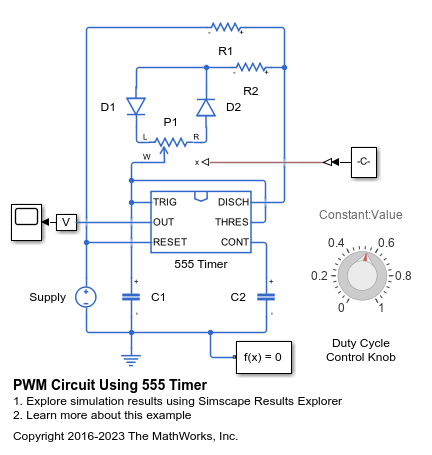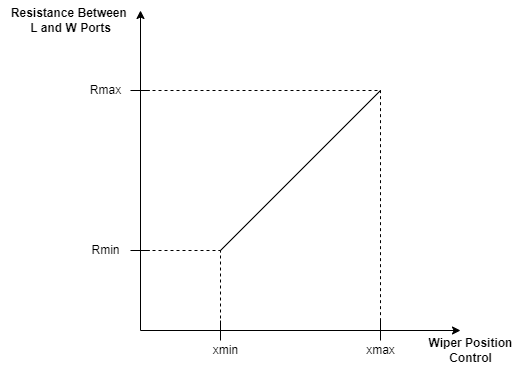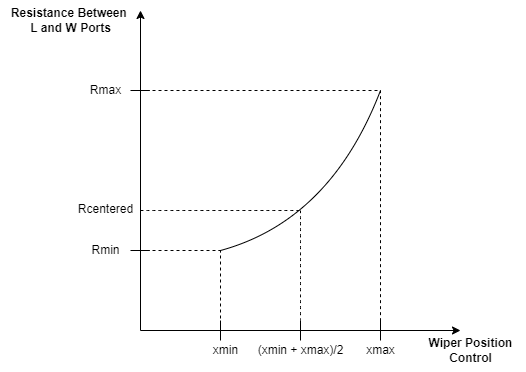Potentiometer
Rotary or linear-travel potentiometer controlled by physical signal
Libraries:
Simscape /
Electrical /
Passive
Description
The Potentiometer block represents a rotary or linear-travel potentiometer, with the wiper position controlled by the input physical signal.
If the potentiometer resistance changes linearly based on wiper position, then the resistance between the wiper position and port L is:
where
RWL is the resistance between the wiper position and port L.
R0 is the total resistance between ports L and R.
x is the wiper position.
xmin is the value of the wiper position when the wiper is at port L.
xmax is the value of the wiper position when the wiper is at port R.
r is the residual resistance. This is the resistance between the wiper and port L when x is equal to xmin. This is also the resistance between the wiper and port R when x is equal to xmax.
If you specify Logarithmic for the
potentiometer resistance Taper parameter, then the resistance
between the wiper position and port L is:
where A and λ are chosen such that RWL at xmax is R0 - r, and RWL at x = (xmax + xmin) / 2 is equal to Rav, the resistance when the wiper is centered.
Note
Potentiometers widely described as LOG or logarithmic taper are, in fact, exponential taper. That is, the gradient of the resistance between wiper and left-hand port increases as the resistance increases. The Potentiometer block implements this behavior.
For both linear and logarithmic tapers, the resistance between the wiper position and port R is:
where
RWR is the resistance between the wiper position and port R.
R0 is the total resistance between ports L and R.
RWL is the resistance between the wiper position and port L.
Examples
Ports
Input
Conserving
Parameters
Extended Capabilities
Version History
Introduced in R2010a



